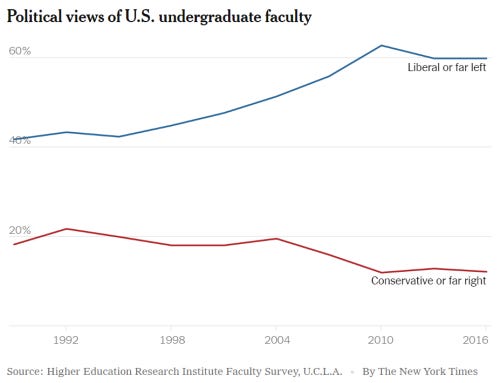WE DEEPLY MOURN THE DEATH OF CHARLIE KIRK
It has never happened before that The Reproductive Times posted opinions from the Editorial Board in two consecutive postings, but the murder of Charlie Kirk, age 31, not only warranted it, but really mandated this because of an internal backstory, the Editorial from last Friday, September 10, 2025. It ended with the following sentence:
“All evil in the world can only be combated at its roots, and that under current conditions and in present times means that, unless our leading institutions of higher learning are radically reorganized, the country and the world will only continue to get worse.”
And we didn’t even imagine how quickly after these words were posted, the world, indeed, would get worse, much worse! Nobody, of course, even considered the possibility. As it turns out, Kirk, in reality, indeed, was receiving constant threats to his life and, therefore, had a real security team traveling with him.
But even he, likely, did not consider himself to be the target of a long-distance sharpshooter. Otherwise, he would likely have protected himself accordingly. After all, are sharpshooters not only reserved for presidential assassinations?
Likely, even only very few security experts would have considered the possibility of a long-distance “execution” of Kirk by someone like the 22-year-old Tyler Robinson, who has been arrested and is accused of having been the shooter of the single bullet that killed Kirk. And yet, just a few hours after we posted our Editorial last Friday, it happened, and, within a split second, the world had, indeed, gotten so much worse. It had lost its likely most fascinating young politicians with a canny and unmatched ability to speak to especially men in the current college age group and, of course, also a loved son, husband, and father of two young children.
How could this happen?
Even after two attempts at President Trump’s life, innumerable school shootings—the last one just weeks ago, church and synagogue shootings, and innumerable senseless murders by obviously psychiatrically sick individuals during the routine daily life of mostly random victims—the last one a deadly stabbing just days ago taking the life of a young Ukrainia women who for personal safety had fled the war in Ukraine to the U.S., only to be murdered here.
But Kirk’s execution-style murder appears to us as different from all of these others.
While one, of course, can argue that murder is murder, we as physicians believe that it is almost impossible to cure a disease without having first a reliable diagnosis. In other words, unless we understand why a 22-year-old seemingly normally functioning young adult commits such a heinous crime, we will not learn to prevent it, and, to once again use a medical analogy, a single case can then turn into an epidemic or even a pandemic. And aren’t we already in one?
Interestingly, so far, only noted by surprisingly few media outlets, the Kirk killing has a lot in common with another recent murder, the killing of UnitedHealthcare CEO Brian Thompson, age 50, in the middle of a New York City avenue, as he was leaving his hotel to attend a board meeting.
The similarity lies not only in that both of these murders involved planned shootings with a clear purpose to kill, while their victims were pursuing their routine work activities. There, indeed, are more common denominators here than that: Both murders had, without raising suspicion, to be carefully researched in advance, in detail planned, and executed with perfection. Tyler Robinson shot only once (imagine if Trump’s assassin had had the same skill level!). Both of these assassins, therefore, required a considerable degree of brain power (considering its use, it is difficult to describe it here as intelligence), physical acuity, and precision training with their respective weapons.
It, therefore, does not surprise that both of these perpetrators were considered to be talented students. As The Wall Street Journal reported, “Robinson was the pride of his Utah family,”1 a traditional conservative Mormon family, with both parents allegedly registered Republicans. He had won a prestigious college scholarship and, according to the Journal article, his mother once noted on Facebook that “his options are endless.” Similarly, Luigi Mangione, the accused murderer of above above-noted UnitedHealthcare CEO, came from a wealthy and prominent Maryland family. He was the 2016 valedictorian at his prestigious private high school in Philadelphia and later earned two engineering degrees from the University of Pennsylvania. By no means an underachiever!
Both of these males in their 20s, thus, apparently were of above-average intelligence and highly performing individuals, came from stable and economically advantaged families, and, apparently, came with none of the psychosocial baggage and psychiatric histories that many of the other perpetrators of horrible slaughters in recent years were allegedly carrying with them. They also never—like many of the other perpetrator—considered their murders a final message to somebody specific or, possibly, society in general, and, in contrast, to, for example, many of the school shooters, did not in the pursuit of their act, plan on dying—either at the hand of police or through suicide before being arrested.
Very much to the contrary, both of the here discussed individuals apparently very much wanted not only to avoid arrest, but also had absolutely no intention of committing suicide, even if threatened to be arrested. One, therefore, must also wonder what their plans had been for their future lives after the murders? More murders or returning to ideological non-violence? Interestingly, we were unable to find even a single mention in social and legacy media that has so far raised this obviously important question. It does seem very unlikely to us that either one of these two perpetrators even considered the possibility of having to spend the rest of his life in prison or, even, of being executed.
Both in that regard demonstrate similarities with another recently convicted, only slightly older (age 30 at the time of arrest) murderer, Bryan Kohberger, himself paradoxically a PhD student in criminal justice at Washington State University. Based on his schooling and past academic record, he, however, was not only less “bright” but also “stranger” in his behavior in society before their murders than Thompson and Mangione and, after a plea deal, has already been sentenced to four consecutive life sentences for the cold-blooded murder of four sleeping students in an off-campus house from the University of Idaho. His motives, though, because of the plea deal, never explained to the public, were clearly different from those of Thompson and Mangione, who both, very clearly, were motivated by personal political believes and resentments.
Though state as well as federal government indicated their intent of seeking the death penalty for Thompson, as the Kohberger case demonstrated (there, too, the prosecution had promised the death penalty, only to announce the plea deal literally hours before trial start), one can never preclude the possibility of a plea deal in such cases, which then—as the Kohberger case also demonstrated—can relieve the accused from ever having to explain motivations for the committed crime.
Suffice it to say that such a decision, therefore, does not help in better understanding the thinking process of these murderers; in other words, another reason why these murderers should have to stand trial, where their motivations can, at least to some degree, be explored. Alternatively, pre-trial settlements should mandate full disclosure of motives by the defendant, a condition unfortunately not required by the prosecution in the Kohberger plea deal. Kohberger’s motives, therefore, will to a large degree remain hidden to researchers trying to understand what drives these murderers to commit these horrendous crimes.
We, therefore, may never know Robinson’s motivation for the murder of Charlie Kirk, or we may. Social resentment of being poor is a frequently alleged motive (and excuse) given especially by the political left and, therefore, leaves one wondering what the motivation of “rich kids” may be, as one, of course, can argue that rich kids with good family backgrounds and education, historically, may have caused as much, or even more, harm to society than other economically less fortunate, and less educated members of society.
Here are a few interesting historical examples: Karl Marx was the third child of a well-to-do middle-class lawyer in Germany who, as at the time was the fashion in educated society prioritized “Bildung,” the German word for a fusion of education in mostly the classics and philosophy. Getting “Bildung” at the university, Marx got into contact with various revolutionary groups as well as with Hegelian philosophy2 (universities, of course, already then influenced the political believes of their students). His lifelong collaborator, Friedrich Engels, however, did grow up very rich but, as he developed his political believes, actually cited his father’s factories as examples of oppression, which obviously led to a rather fraught relationship between the two. And the rest is history!
Josef Mengele, the “Angel of Death” in the Auschwitz concentration camp of the Nazis in Poland, graduated from medical school (we hesitate to call him a physician), came from a wealthy family, and also had earned a Ph.D. in anthropology. Maximillien Robespierre was, of course, a leader in the French Revolution. As a lawyer, he initially championed freedom and individual rights, but he then became responsible for the so-called “Reign of Terror” in the revolution, in the process killing ca. 40,000 people. And there was, of course, Britain’s Jack the Ripper during Victorian times, though never caught - widely believed to have been an aristocrat.
That rich kids become revolutionaries is, therefore, nothing new. There, of course, are many examples in history. One, indeed, can consider Moses as one of them, giving up his royal status to lead his people out of Egypt.
And being very wealthy and on the left of the political spectrum is, of course, also nothing new in today’s world. As we hear, Illinois billionaire governor, Jay Robert Pritzker, has serious plans of running for president in 2028. His sister Penny Pritzker, of course, heads the equivalent of what is the Board of Directors at Harvard University and financed, to a large degree, President Obama’s first campaign for president. Or who doesn’t know U.S. billionaire, George Soros, likely the biggest financier of left-leaning causes in the country.
But you don’t even have to be a millionaire or even billionaire to drift toward the left: In the 2024 U.S. presidential election, among voters with what now has to be considered modest middle-class family income of “only” $100,000 to $199,999, 51% voted for Kamala Harris.3
What leads relatively wealthy and even very wealthy people has been widely explored in the behavioral sciences, but answers have remained largely clichés. A recent Substack article is, however, a good reference point for interested readers.4 It included the cartoon below from 1933 that still has relevance.
As already in the days of Marx and Engels, much of the indoctrination that leads to this phenomenon, of course, also still in present days, happens at the universities. And does anybody seriously believe that, with Penny Pritzker at the helm, Harvard will voluntarily seriously reform itself toward a more balanced political viewpoint?
We don’t think so: Faculties and boards at universities over decades have been progressively tilting toward the left and, with it, of course curricula and what students are taught This is exactly, however, why in the preceding Editorial last Friday we made the point that the whole school system—really from kindergarten to schools of higher education—must be urgently reformed if this country is to find its way back to relative normality.
And what does this have to do with the assassination of Charlie Kirk?
Maybe not everything, but certainly enough to use his death to call for immediate action because, in principle, all cultural developments, whether positive or negative, are driven by our education system. And it must start in kindergarten because, if only 30% of graduates in some high schools can read at graduation at a time when the U.S. spends multiples on education per student in comparison to most other countries (one here also must acknowledge the parallels to our health system which also spends multiple of practically any other country in the world, just to rank far behind in nation health to many of these other countries), and when universities rob middle class families poor with tuition fees which students in other countries can only lough about, while often having huge tax-exempt endowments in the billions, something must give.
And, not to be forgotten, we at least pretend to have to compete with China for future leadership. China does not graduate 30% of illiterate high school students, and China also does not have politically powerful teacher unions that don’t give a damn about the children they teach.
Charlie Kirk understood all of this when he was only 18 years old and decided against continuing with college, which bored him. He, instead, chose to try to help reform the country he loved by, first and foremost, informing students at universities how and why they were indoctrinated the way they were by the respective faculties at their universities. Especially elite liberal arts colleges and top-ranked research universities demonstrate a strong liberal skew in selecting faculty, with departments often having only very few or even no Republican-registered faculty.5
A 2025 survey of Harvard faculty by The Harvard Crimson revealed “political leanings” of the Harvard faculty in the following way: 29% very liberal; 34% somewhat liberal; 27% moderate; 9% somewhat conservative; and 1% very conservative.6 At Duke University, the same distribution categories were 22.3%, 38.5%, 24.5%, 9.9%, and 3.9%.7 And to demonstrate the “inbreeding” of faculties, 80% of U.S. professors come from just 20% of universities.8 At the same time, the figures below speak for themselves in demonstrating how selection biases for faculty have been increasingly trending toward the left.
And because he succeeded beyond all expectations (in the process significantly helping President Trump to get reelected), many on the left not only correctly associated him with President Trump’s policies but made him into a superstar foe who seriously threatened the left’s dominance of academia.
Nobody, at least as of this writing, knows what exactly motivated Tyler Robinson to murder Kirk. Whatever the motive—and how irrational it may have been—it appears extremely unlikely that somebody else instigated him, paid him, or made him do what he did in any other way. He, with great likelihood, intentionally killed Kirk because of one of the other political or ideological convictions he deeply believes in. Ideology is like religion: one must be a true believer!
And once that point is reached, any evidence to the contrary no longer matters, and its presentation is, indeed, usually viewed as morally objectionable. Imagine breaching one of the 10 commandments for a Jewish or Christian believer.
Moreover, suppose one wishes to remain morally pure. In that case, one, of course, is obliged to fight morally objectionable information, at which point another important contributing factor enters the picture—the desensitization of our youth through social media, and movies toward violence in general, and then, specifically, of course, toward everything and everybody perceived as morally impure.
This kind of thinking not only led to the murder of the health insurance company CEO because his company supposedly acted immorally, but also to Charlie Kirk’s murder because he introduced college students and whoever else was increasingly willing to listen to his arguments, to what, in the opinion of his murderer, likely, were likely immoral ideas and concepts.
Disturbingly, this thinking, however, also finds increasingly wider support among young adults in general, with surprisingly many viewing Luigi Mangione after his arrest as something akin to a folk hero (among women, it may also have helped that he is good looking) and this kind of admiration Mangione received from the public may also have been a driving force for Tyler Robinson.
Unconfirmed rumors at the time of this writing suggest that he was in a gay relationship with a male partner who is in the process of transitioning to female. Kirk’s position on transitioning may, therefore, in Robinson’s eyes, have been so immoral that it made Kirk deserving of death. The Wall Street Journal, in another article on September 12, 2025,9 moreover, pointed out that Kirk, assuming Robinson’s motives were, indeed, transgenderism-related quite absurdly was in the midst of a back and forth with a student about mass shootings involving transgender people.
We want to reiterate that all of this—as of this point—is, of course, pure speculation. But, definitely no longer speculation is the fact that our youth, on a daily basis, is being desensitized about the use of violence by TikTok, other social media, and not to be forgotten, by often incredibly violent movies. The combination of all of these suggested social as well as political influences then creates the Robinsons and Mangiones of this world.
It, however, also leads to the denial of October 7 (because who cares about facts if denial, seemingly, offers moral superiority), while at the same time not seeing the contradiction in conducting pro-Palestinian protests under the lead slogan, “From the River to the Sea,” which basically advocates the annihilation of millions of Jews in Israel, i.e., a second Holocaust.
In short, Charlie Kirk has likely become the victim of a political movement he was fully aware of and, in his typical way, openly addressed wherever and whenever he was given the opportunity to do so. But neither he nor anybody with a sane mind could ever have imagined what happened on September 10, 2025, another date that will stand in infamy.
And the lessons from all of this?
They are quite clear already at the moment of this writing, even though we, of course, still don’t know enough about Robinson’s motives: If we do not quickly and systemically change how things are currently managed in many societal spheres, foremost, of course, education, but also criminal justice, our medical system, drug use and abuse, and, of course, the influence of social media, there will be more October 7s and September 10s. Let’s not forget that the year has only 365 days and that the days to remember, therefore, will quickly fill up if we don’t succeed in changing the country quickly.
References
Elinson et al., The Wall Street Journal; September 13-14, 2025. pA1
Tierney A. Statista. June 23, 2025. https://www.statista.com/statistics/1535295/presidential-election-exit-polls-share-votes-income-us/
Cohen N. Substack. April 21, 2025.
GOOGLE Research. September 14, 2025, https://www.google.com/search?q=Graphic+representation+of+How+liberal+are+university+facuties&rlz=1C5CHFA_enUS1083US1083&oq=Graphic+representation+of+How+liberal+are+university+facuties&gs_lcrp=EgZjaHJvbWUyBggAEEUYOdIBCjMyODYzajBqMTWoAgiwAgE&sourceid=chrome&ie=UTF-8#imgrc=8Lq6NwgMO1R41M&imgdii=dXPjGPkA7tWAvM
Mao WC, Paulus VH. The Harvard Crimson. September 3, 2025. https://www.thecrimson.com/article/2025/9/3/faculty-response-liberal/
Wang A. The Chronicle. October 21, 24. https://dukechronicle.com/article/duke-university-faculty-survey-political-leanings-liberal-conservative-moderate-centrist-harvard-yale-variation-across-school-tenure-status-demographics-20241022
Wapman et al., Nature 2022; 610:120-127
McGraw M. The Wall Street Journal. Updated September 12, 2025; https://www.wsj.com/livecoverage/charlie-kirk-shot/card/kirk-engaging-with-student-about-transgender-people-and-mass-shootings-when-shot-uKe35qWaDHWRiqRBGSU8?gaa_at=eafs&gaa_n=ASWzDAjyUGRi0Krs1HCfQ6cZJtvayvN02Sn-VYg3bXp5rMFMpmXVko7c0KilOPEN3YI%3D&gaa_ts=68c6fae8&gaa_sig=yhuLOskXzvEeIBYQmfqRfWOzTLUeyTpv3DbV4UMDxUmTFVO5KXdCXE6BF1UMpo2j_0H36J2qbvTLcq-wHPSjAA%3D%3D







